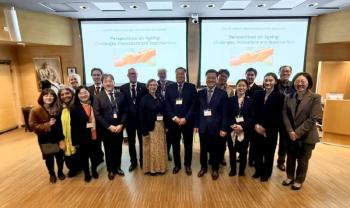Catching cancer cells with mRNA...The technology used in vaccines extends to chemotherapy
Sep 15, 2025
|
The research team developed 'Lipid Nanoparticle (LNP)' that delivers genes that make cancer cells die on their own in the form of mRNA, and used them to confirm anticancer effects in lung metastatic cancer models.
Although mRNA and lipid nanoparticles have recently received great attention as COVID-19 vaccines and are also being applied to chemotherapy research, most of them were injected through intramuscular injections, mainly in the form of cancer vaccines. The problem was that it was difficult to deliver anticancer genes to cancer cells through intravenous injection, and the application of various anticancer genes that have been discovered so far has been limited.
Professor Koo Hee-beom's research team used optimized lipid nanoparticles to solve this problem. Lipids are simply 'Oil Components', which make very small particles from these components and put mRNA, a genetic material, into them.
The mRNA plays a role in directing the creation of proteins in cells, and the research team included a blueprint for making two types of proteins that induce cancer cells to die on their own. The lipid nanoparticles made in this way are designed to only reach specific organs (lungs), so that they only affect cancer cells without touching other normal organs.
The strategy used by Professor Koo's research team is not simply to convey a single signal, but to induce apoptosis (a process in which cells die on their own) of cancer cells through two different pathways. The first is TRAIL (a protein that sends signals from the outside to kill cancer cells), and the second is BAK (a protein that causes cells to die by ordering suicide inside cells). In particular, it was used that these proteins are more effective in cancer cells rather than normal cells.
The research team designed mRNA to express TRAIL and BAK simultaneously. In other words, it used a dual strategy to send a signal to cancer cells to die from the outside, and to operate suicide programs from the inside. Thanks to this, the anticancer effect was much greater than when only a single gene was used.
As a result of the experiment, it was confirmed that mRNA delivery using lipid nanoparticles in lung metastatic cancer models is effective in suppressing cancer cell growth and preventing metastasis. This is evaluated as an example that has shown new possibilities for mRNA-based chemotherapy.
The study does not just end at the laboratory level, but shows the potential for future applications in various cancer treatment fields. In particular, it is significant that mRNA technology known to the public through recent COVID-19 vaccines can now be extended to cancer treatment.
Professor Koo Hee-beom said, "This study demonstrates the possibility of attacking cancer cells by delivering mRNA directly to cancer cells with lipid nanoparticles injected through intravenous injection." he said.
The study was carried out with support from the Catholic Central Medical Center Basic Medicine Project Promotion Team and the △ Medium-sized Research △ Gene Editing, Control, and Restoration-based Technology Development Project △ Ph.D. Student Research Grant Support Project. It was published in the online edition of the international journal 『Chemical Engineering Journal』 and will be published in the October issue.
|
This article was translated by Naver AI translator.















